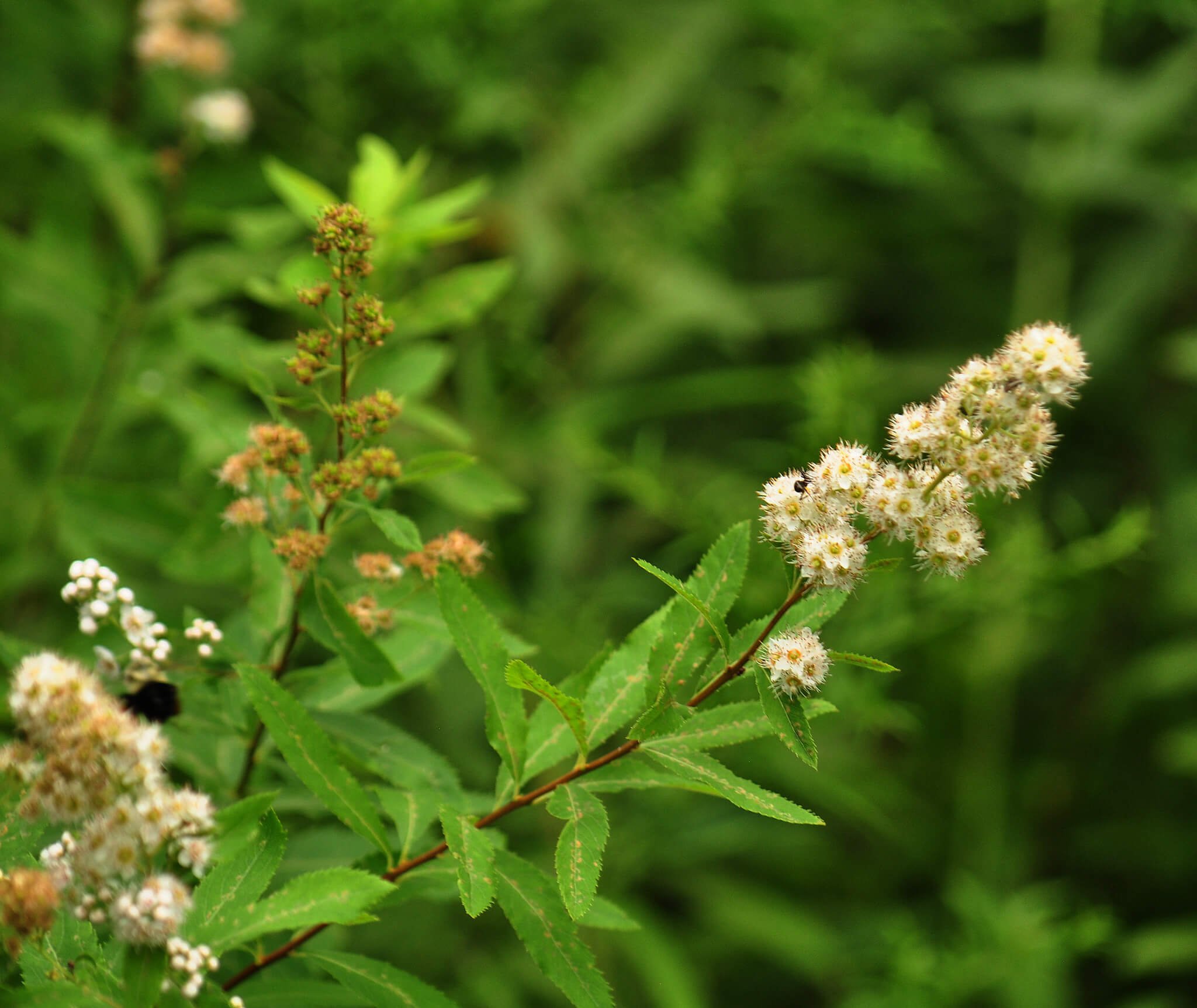Meadowsweet (Spiraea alba)
Meadowsweet flowers many different kinds of native bees and small butterflies. This pretty plant is the host to 92 species of butterflies and moths in our area (nwf.org)), including the threatened 3-Striped Oncocnemis (mnfi.anr.msu.edu/). It is also a food source for the Ruffed Grouse and Greater Prairie Chicken and songbirds and gamebirds use it as a protective cover and/or nesting sites (illinoiswildflower.info). Spiraea alba is a great native alternative to the Japanese Spirea used in many traditional landscape designs.
Photo credit: John Blair (1)
Meadowsweet flowers many different kinds of native bees and small butterflies. This pretty plant is the host to 92 species of butterflies and moths in our area (nwf.org)), including the threatened 3-Striped Oncocnemis (mnfi.anr.msu.edu/). It is also a food source for the Ruffed Grouse and Greater Prairie Chicken and songbirds and gamebirds use it as a protective cover and/or nesting sites (illinoiswildflower.info). Spiraea alba is a great native alternative to the Japanese Spirea used in many traditional landscape designs.
Photo credit: John Blair (1)
Meadowsweet flowers many different kinds of native bees and small butterflies. This pretty plant is the host to 92 species of butterflies and moths in our area (nwf.org)), including the threatened 3-Striped Oncocnemis (mnfi.anr.msu.edu/). It is also a food source for the Ruffed Grouse and Greater Prairie Chicken and songbirds and gamebirds use it as a protective cover and/or nesting sites (illinoiswildflower.info). Spiraea alba is a great native alternative to the Japanese Spirea used in many traditional landscape designs.
Photo credit: John Blair (1)
Life Cycle: Perennial
Sun Exposure: Full, Partial
Soil Moisture: Wet, Medium-wet
Height: 4 feet
Plant Spacing: 1-3 feet
Bloom Time: July-Sep
Bloom Color: White
Advantages: Caterpillar Favorite, Bird Favorite
Host Plant: 92 species of butterflies and moths use this as a caterpillar host plant in our area (nwf.org)
Beneficial for Endangered or Threatened Species: 3-Striped Oncocnemis (mnfi.anr.msu.edu/)






